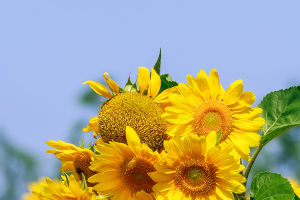Trifolium pratense, commonly known as red clover, is a vibrant perennial flower that holds a prominent place in herbal medicine and gardening.
Let’s delve into what makes red clover a remarkable flower for both health and the environment.
Nutritional and Health Benefits
Red clover is rich in isoflavones, which are compounds similar to estrogen. These phytoestrogens can be particularly beneficial for women going through menopause, as they may help alleviate symptoms such as hot flashes and mood swings. Additionally, the antioxidants found in red clover can help combat oxidative stress in the body, supporting overall health, and reducing the risk of chronic diseases.
Moreover, red clover is known for its potential benefits in promoting heart health. The flower may help lower bad cholesterol levels and improve blood circulation, which is essential for maintaining a healthy cardiovascular system. Some studies suggest that red clover can aid in bone health as well, potentially reducing the risk of osteoporosis, especially in postmenopausal women.
Culinary Uses
Beyond its medicinal properties, Trifolium pratense is also edible! The flowers and leaves can be used in salads, teas, or as a garnish, adding a subtle sweetness and unique flavor. The young leaves can be harvested and cooked like spinach, making them a nutritious addition to various dishes. As a culinary herb, red clover not only enhances the taste but also adds nutritional value.
Garden and Ecological Benefits
In gardening, red clover is valued as a cover crop. Its deep roots help to improve soil structure and prevent erosion, while its nitrogen-fixing properties enrich the soil, making it more fertile for future crops. This flower attracts beneficial insects, including bees and butterflies, promoting biodiversity in the garden.
Trifolium pratense, or red clover, is a multifaceted flower that offers remarkable health benefits, culinary versatility, and ecological advantages. Whether you are seeking natural remedies, looking to enhance your garden, or wanting to enjoy its delightful flavor in your meals, red clover proves to be a valuable addition to your life. So, Lykkers, embrace the beauty and benefits of this extraordinary flower and consider incorporating it into your health and gardening routine!


